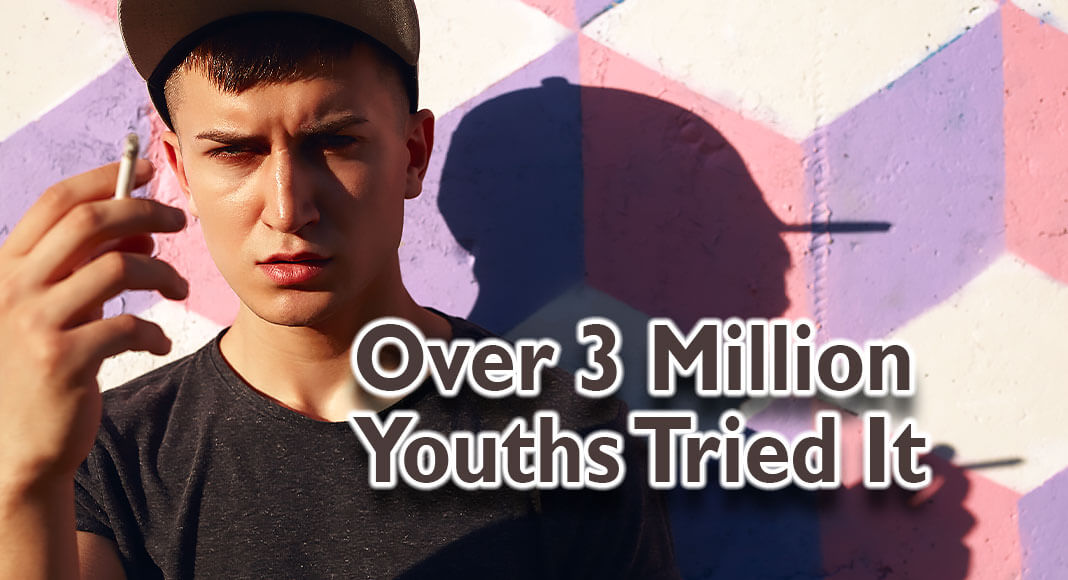
Mega Doctor News
A study released today from the U.S. Food and Drug Administration (FDA) and the U.S. Centers for Disease Control and Prevention (CDC) found that 3.08 million (11.3%) U.S. middle and high school students reported current (past 30-day) use of any tobacco product in 2022, which includes 2.51 million (16.5%) high school students and 530,000 (4.5%) middle school students.
The study assessed eight commercial tobacco products. E-cigarettes—for the ninth consecutive year—were the most commonly used tobacco product among all students (2.55 million), followed by cigars (500,000), cigarettes (440,000), smokeless tobacco (330,000), hookah (290,000), nicotine pouches (280,000), heated tobacco products (260,000), and pipe tobacco (150,000). The term “tobacco product” as used in this report refers to commercial tobacco products and not to sacred and traditional use of tobacco by some American Indian communities.
Among all race and ethnicity groups, non-Hispanic American Indian or Alaska Native students had the highest percentage of any tobacco product use (13.5%), while non-Hispanic White students reported the highest percentage of e-cigarette use (11.0%). Approximately one million youth reported using any combustible tobacco product; non-Hispanic Black students reported the highest percentage of combustible tobacco product use (5.7%), including cigar use (3.3%).
Additional groups with a higher percentage of tobacco product use were those reporting grades of mostly Fs (27.2%); those reporting severe symptoms of psychological distress (18.3%); those who identified as transgender (16.6%) or as lesbian, gay, or bisexual (16.0%); and those with low family affluence (12.5%).
“Commercial tobacco product use continues to threaten the health of our nation’s youth, and disparities in youth tobacco product use persist,” said Deirdre Lawrence Kittner, Ph.D., M.P.H., director of CDC’s Office on Smoking and Health. “By addressing the factors that lead to youth tobacco product use and helping youth to quit, we can give our nation’s young people the best opportunity to live their healthiest lives.”
This study’s findings, published in Morbidity and Mortality Weekly Report, were based on data from the 2022 National Youth Tobacco Survey (NYTS). NYTS, a cross-sectional, self-administered survey of U.S. middle (grades 6–8) and high (grades 9–12) school students, was administered January 18–May 31, 2022. Changes in methodology limit the ability to compare estimates from 2022 with those from prior years.
“It’s clear we’ve made commendable progress in reducing cigarette smoking among our nation’s youth. However, with an ever-changing tobacco product landscape, there’s still more work to be done,” said Brian King, Ph.D., M.P.H., director of the FDA’s Center for Tobacco Products. “We must continue to tackle all forms of tobacco product use among youth, including meaningfully addressing the notable disparities that continue to persist.”
Factors influencing youth tobacco product use
Many factors contribute to youth tobacco product use, including flavors, marketing, and misperceptions of harm. Most youth who use tobacco products, including e-cigarettes, want to quit.
This study’s findings suggest continuing disparities in tobacco product use, which to a certain extent could be attributed to greater exposure to tobacco promotion and advertising and greater tobacco retail outlet density in racial and ethnic minority communities, among other systemic factors. Those other factors include social determinants of health, which are conditions in the places where people live, learn, work, and play that affect a wide range of health and quality-of life-risks and outcomes.
There are, however, ongoing efforts at the national, state, and local levels to help reduce youth tobacco product use, such as enforcing the federal minimum age of sale of 21 years for all tobacco product types; FDA’s ongoing actions against sales of unauthorized e-cigarettes; state and community restrictions on the sale of flavored tobacco products; efforts to raise the price and prohibit public indoor use of tobacco products; media campaigns and other education efforts that warn about the dangers of tobacco product use.
What more can be done?
Commercial tobacco product use remains the leading cause of preventable disease, disability, and death in the United States. Nearly all tobacco product use begins during youth and young adulthood.
Youth use of tobacco products—in any form—is unsafe. Such products contain nicotine, which is highly addictive and can harm the developing adolescent brain. Using nicotine during adolescence might also increase risk for future addiction to other drugs.
Everyone can help reduce youth product tobacco use. Parents, educators, and healthcare providers can help youth recognize and avoid the dangers of tobacco product use, and support and encourage youth who use tobacco products to quit. Furthermore, it is imperative to address policy and environmental factors that are driving tobacco-related disparities.










